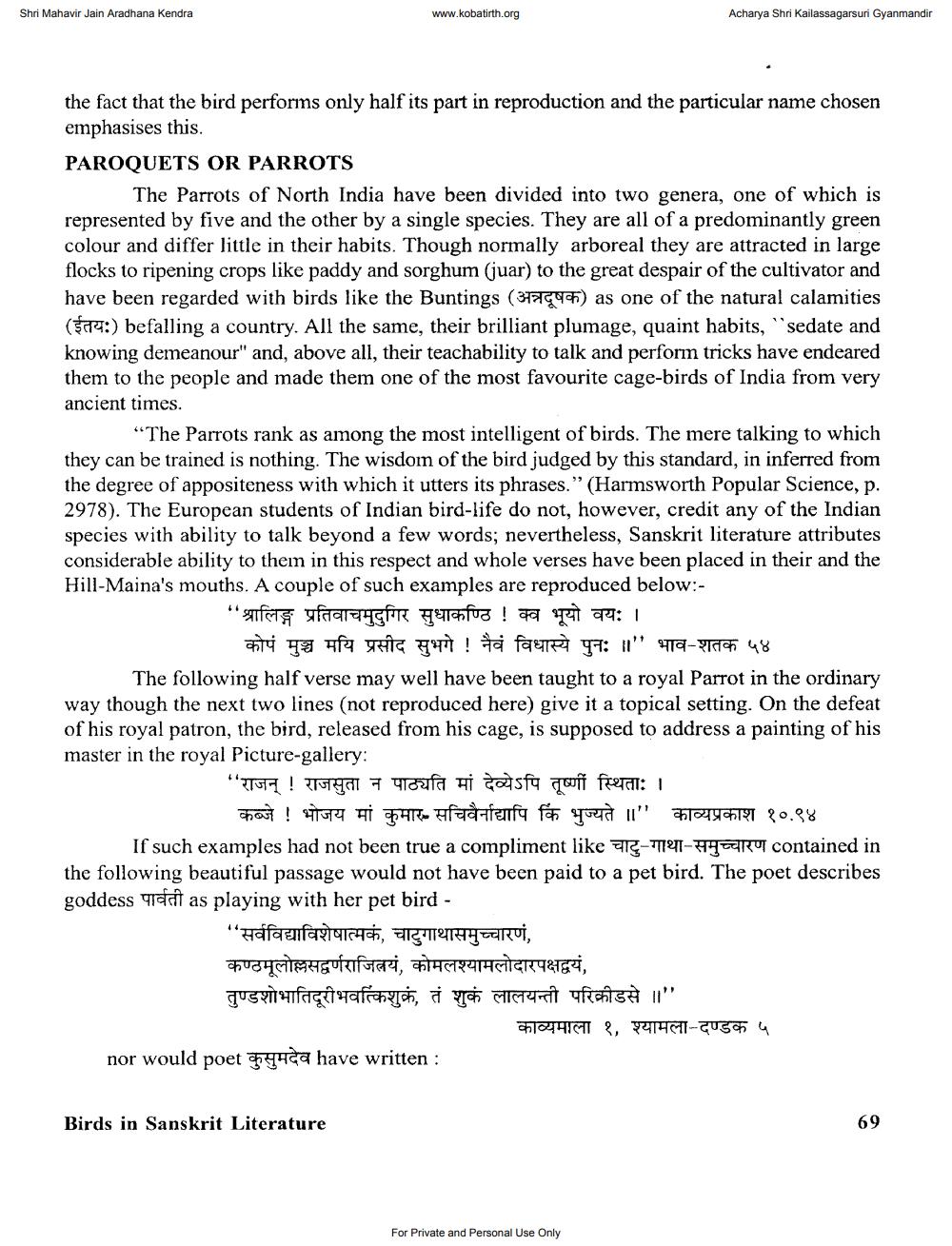________________
Shri Mahavir Jain Aradhana Kendra
www.kobatirth.org
Acharya Shri Kailassagarsuri Gyanmandir
the fact that the bird performs only half its part in reproduction and the particular name chosen emphasises this PAROQUETS OR PARROTS
The Parrots of North India have been divided into two genera, one of which is represented by five and the other by a single species. They are all of a predominantly green colour and differ little in their habits. Though normally arboreal they are attracted in large flocks to ripening crops like paddy and sorghum (juar) to the great despair of the cultivator and have been regarded with birds like the Buntings (377764) as one of the natural calamities ($94:) befalling a country. All the same, their brilliant plumage, quaint habits, ''sedate and knowing demeanour" and, above all, their teachability to talk and perform tricks have endeared them to the people and made them one of the most favourite cage-birds of India from very ancient times.
“The Parrots rank as among the most intelligent of birds. The mere talking to which they can be trained is nothing. The wisdom of the bird judged by this standard, in inferred from the degree of appositeness with which it utters its phrases." (Harmsworth Popular Science, p. 2978). The European students of Indian bird-life do not, however, credit any of the Indian species with ability to talk beyond a few words; nevertheless, Sanskrit literature attributes considerable ability to thein in this respect and whole verses have been placed in their and the Hill-Maina's mouths. A couple of such examples are reproduced below:
is warraf Elfur ! 09 24: 1
कोपं मुञ्च मयि प्रसीद सुभगे ! नैवं विधास्ये पुनः ॥" भाव-शतक ५४ The following half verse may well have been taught to a royal Parrot in the ordinary way though the next two lines (not reproduced here) give it a topical setting. On the defeat of his royal patron, the bird, released from his cage, is supposed to address a painting of his master in the royal Picture-gallery:
"राजन् ! राजसुता न पाठ्यति मां देव्येऽपि तूष्णीं स्थिताः ।
कब्जे ! भोजय मां कुमार सचिवैर्नाद्यापि किं भुज्यते ॥" काव्यप्रकाश १०.९४ If such examples had not been true a compliment like चाटु-गाथा-समुच्चारण contained in the following beautiful passage would not have been paid to a pet bird. The poet describes goddess yra as playing with her pet bird -
"सर्वविद्याविशेषात्मकं, चाटुगाथासमुच्चारणं, कण्ठमूलोल्लसद्वर्णराजिलयं, कोमलश्यामलोदारपक्षद्वयं, तुण्डशोभातिदूरीभवत्किशुक्रं, तं शुकं लालयन्ती परिक्रीडसे ॥"
काव्यमाला १, श्यामला-दण्डक ५ nor would poet 44a have written:
Birds in Sanskrit Literature
69
For Private and Personal Use Only




